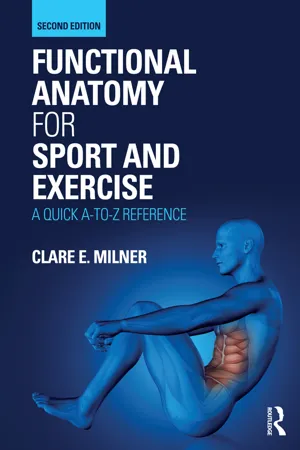
- 152 pages
- English
- ePUB (mobile friendly)
- Available on iOS & Android
About This Book
Functional Anatomy for Sport and Exercise: A Quick A-to-Z Reference is the most user-friendly and accessible available reference to human musculoskeletal anatomy in its moving, active context. Fully updated and revised, the second edition features more illustrations to enhance student learning and an expanded hot topics section to highlight key areas of research in sport and exercise.
An accessible format makes it easy for students to locate clear, concise explanations and descriptions of anatomical structures, human movement terms and key concepts. Covering all major anatomical areas, the book includes:
-
- an A-to-Z guide to anatomical terms and concepts, from the head to the foot
- clear and detailed colour illustrations
- cross-referenced entries throughout
- hot topics discussed in more detail
- in sports examples discussed in more detail
- full references and suggested further reading
This book is an essential quick reference for undergraduate students in applied anatomy, functional anatomy, kinesiology, sport and exercise science, physical education, strength and conditioning, biomechanics and athletic training.
Frequently asked questions
A to Z Entries
Ankle and Foot
Hot Topic 1 Tibial Stress Fracture in Runners
Further Reading
In Sports 1 Chronic Ankle Instability
Further Reading
Ankle and Foot – Bones
Table of contents
- Cover
- Half Title
- Title Page
- Copyright Page
- Dedication
- Table of Contents
- List of Figures
- List of Tables
- List of Fundamentals
- List of A to Z Entries
- List of Hot Topics
- List of In Sports
- Acknowledgements
- Introduction
- Fundamentals
- A to Z Entries
- Bibliography
- Index